How to recreate your own Mediterranean garden at home
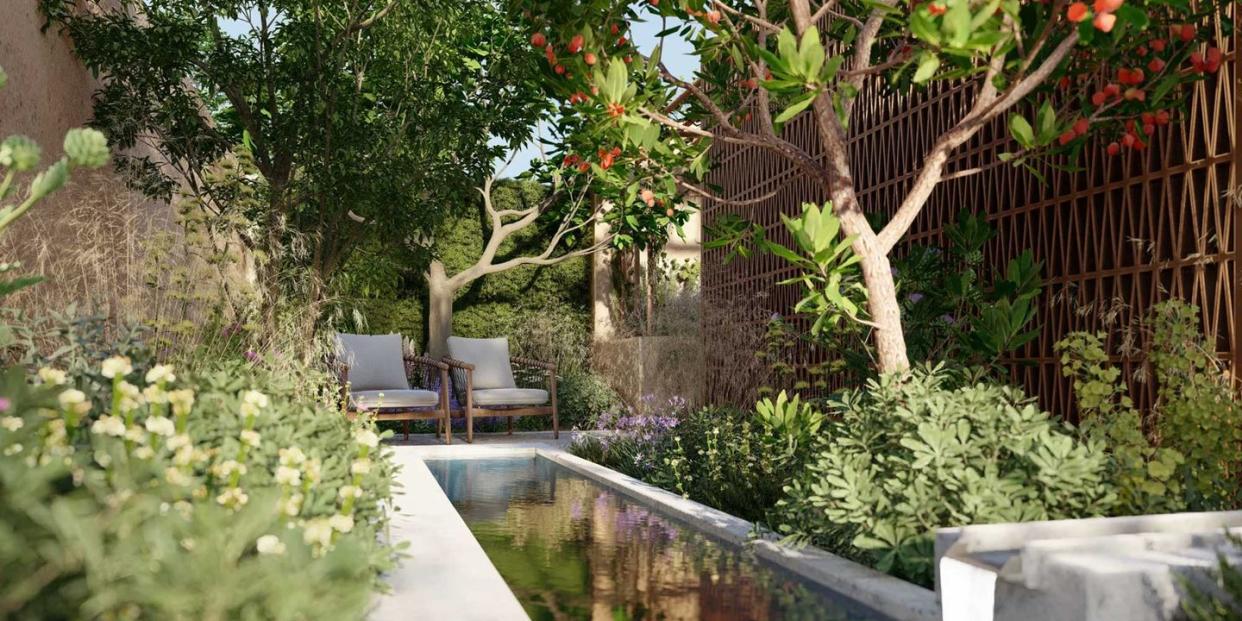
Sun-soaked olive groves, wild rosemary bushes and fields bursting with lavender. The Mediterranean is full of fragrant plants and colourful flowers that will bloom just as successfully in the UK, given the right conditions.
Best of all, though, they instantly add a sense of summer to your garden. The region’s many easy-to-grow plants, from abundant shrubbery in the maquis’ rocky, dry scrubland to blooming pink and scarlet pelargoniums, need little water to thrive, so are ideal as temperatures rise and hosepipe bans come into effect.

Better still, Mediterranean gardens are low maintenance, letting you hold on to that laid-back holiday attitude all year round.
How to create a Mediterranean garden
Add grit

Whether it’s a sunny border, a circular bed carved into your lawn or a clutch of containers, the one requirement of a Mediterranean garden remains the same: poor, free-draining soil to emulate the conditions loved by the region’s plants.
Stones of all shapes and sizes are the equivalent of the English garden’s well-rotted manure! Working grit into the soil – especially if your soil is clay-based – will ensure plants have the free drainage they need to thrive in wet as well as dry conditions.
Covering them with a mulch of grit or gravel – adding pebbles or small stones here and there, gives the look of natural terrain while cutting down water loss and reducing weeds. Consider using gravel to create flowing paths through plants, so you can walk among them and enjoy their colours, textures and scents.
Plant herbs

Herbs are a key part to a Mediterranean garden, so head to the herb section of your garden centre to form the backbone of your planting.
The ideal conditions for your herb garden will be free-draining soil and a sunny position, and a trio of 9cm pots filled with each of the different herbs. The best herbs for a Mediterranean garden are santolina, helichrysum, thyme, rosemary and oregano.
It's also suggested to plant your herbs randomly, in order to create a more of a naturalistic flow to your garden. Once you let them flower, your Mediterranean garden will zing with heady aromas of the Med and attract all the bees and butterflies.
Plant small trees
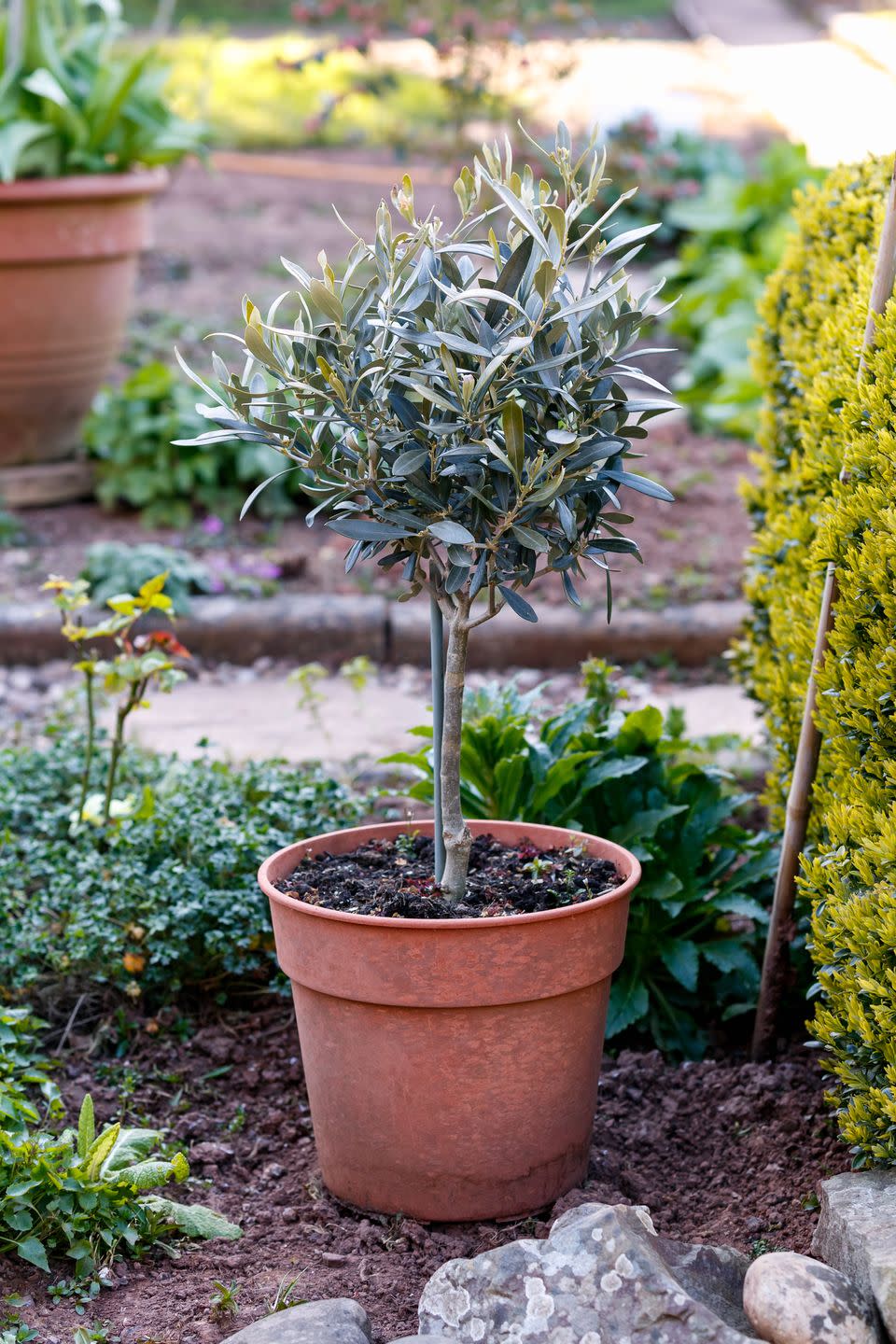
Olive trees are perhaps the symbol of the Mediterranean, and you can grow them in Britain – either in a sunny spot or in a container. You might even get fruit!
Another great tree choice is Cercis siliquastrum, or Judas tree; it’s similar to our lilac, though its blossom is sugar-pink and springs direct from the trunk and boughs.
Or you could try the Arbutus unedo, the strawberry tree, which has white flower clusters and dangling, strawberry-like fruits. Or, for a new hedge, plant Prunus lusitanica, the large-leaved, evergreen Portugal laurel.
Plant Mediterranean-style flowers
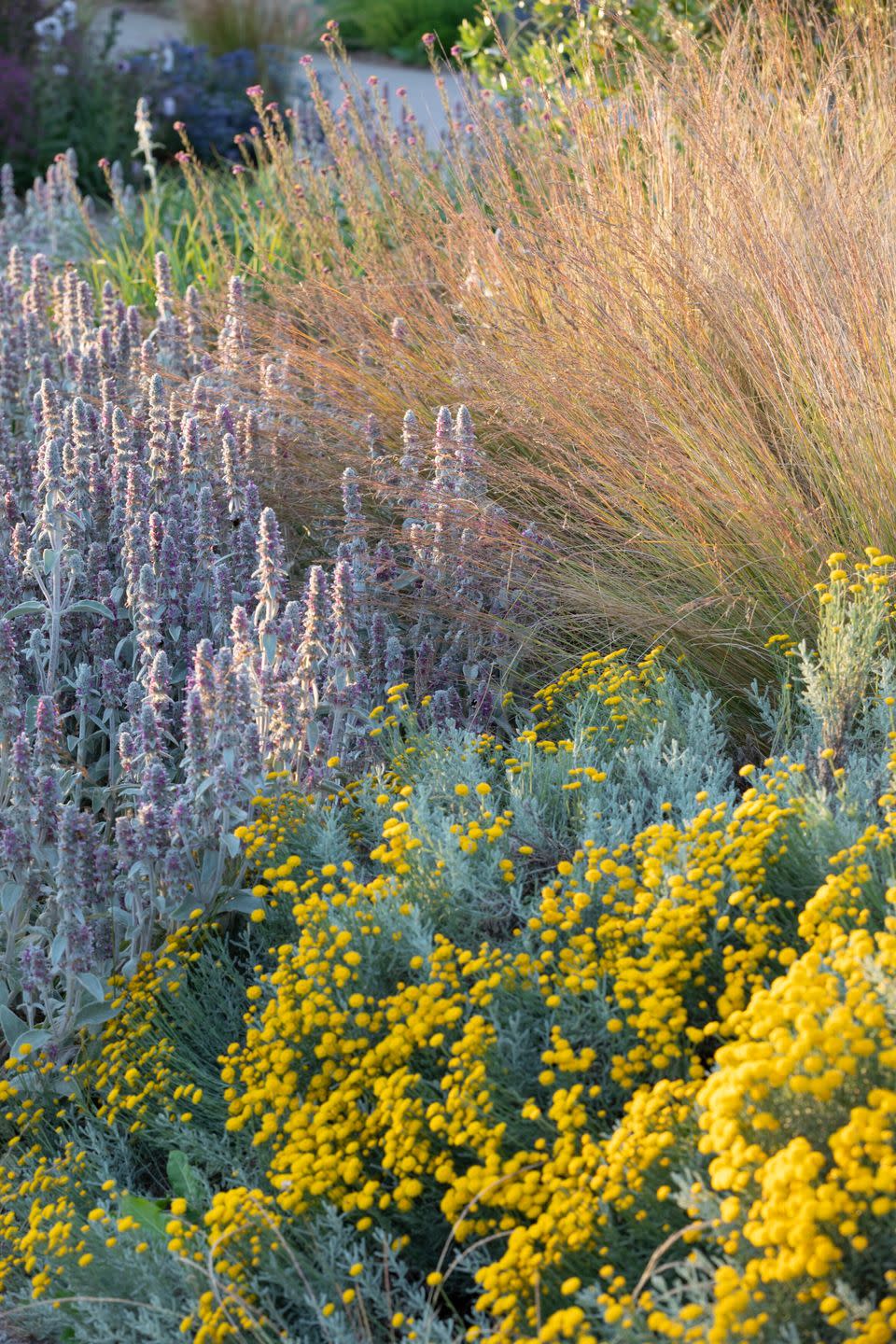
Evoke the spirit of the Med with silver or grey plants that have thick, fleshy leaves, such as sedums; those with felt-like and velvety leaves, such as lamb’s ear (Stachys byzantina), phlomis and sage; or those with needle-shaped leaves, such as lavender and santolina. These plants have adapted to drought by storing water, trapping moisture from the air or minimising their surface area to limit water loss.
Drought-lovers thrive in containers, which reduce the need for watering and, happily, deadheading. Try a fruiting purple fig, or a grapevine scrambling up trellis in a trough.
You could also design a small-scale lavender ‘field’ in two outsize pots on either side of a garden bench, or a flower-studded creeping rosemary tumbling over the edges of a tall urn for a touch of Provence? But no plant shouts Mediterranean louder than a pelargonium, the most tolerant of all container plants. For knockout colour on a larger scale, bag a bougainvillea (bring it in over winter).
Although English roses have no place in a low-maintenance Mediterranean-style garden. Their equivalents are equally gorgeous, which include helianthemums (low-growing,
scrambling rock roses), and cistus (the larger, shrubby sun roses with their outsize, papery flowers).
You can also add plants from Med-like climates for extra pizzazz: maybe a Balkan clary sage (Salvianemorosa ‘Caradonna’)or an African daisy (osteospermum, available in lots of bright shades).
For the full effect of a Mediterranean garden in your outdoor space, get half of dozen of the Med-style plants and flowers grouped together, or line steps or pathways with the different flowers in some stylish terracotta pots.
The best Med-style plants for drought-prone sunny spots:
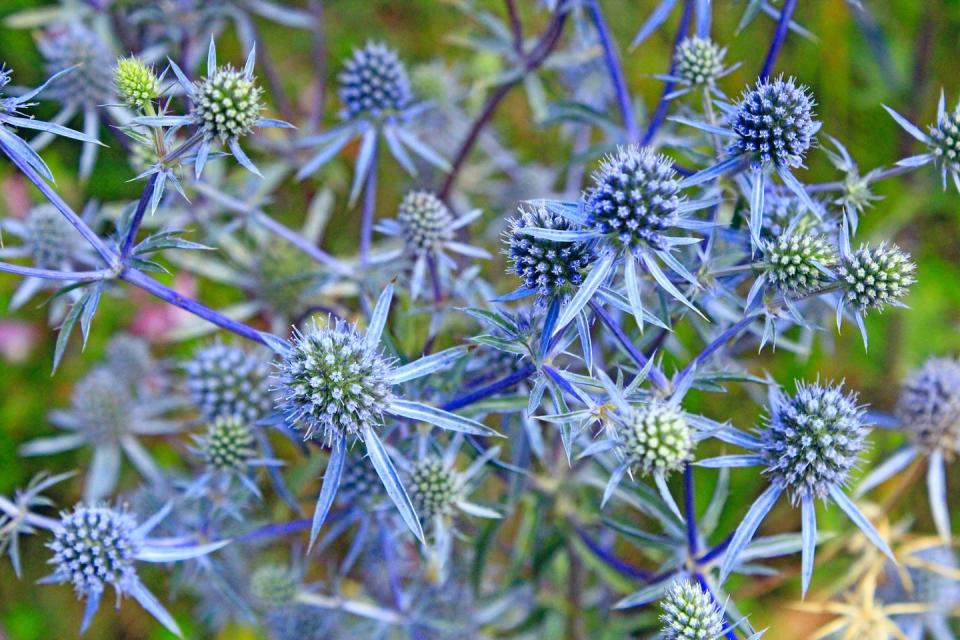
ERYNGIUM Sea hollies with metallic blue foliage and thistle-like flowers.
SANTOLINA Aka cotton lavender, this has button-like yellow flower heads in early summer.
EUPHORBIA CHARACIAS Blue- grey foliage with stiff stems carrying lime-green flower heads in spring.
LAVENDER As well as English lavenders, try the French variety Lavandula stoechas, which display tufted heads.
SALVIA ROSMARINUS The ‘Fota Blue’ rosemary has deepest-blue flowers.
HELICHRYSUM ITALICUM Fine, silvery foliage that carries a spicy maquis aroma.
ALLIUMS Scatter the bulbs through borders in early autumn for purple drumstick flowers the following summer.
CERINTHE MAJOR ‘PURPURASCENS’ A self-seeding annual with grey-blue leaves and deep-mauve flowers.
The best Med-style plants for shady spots:
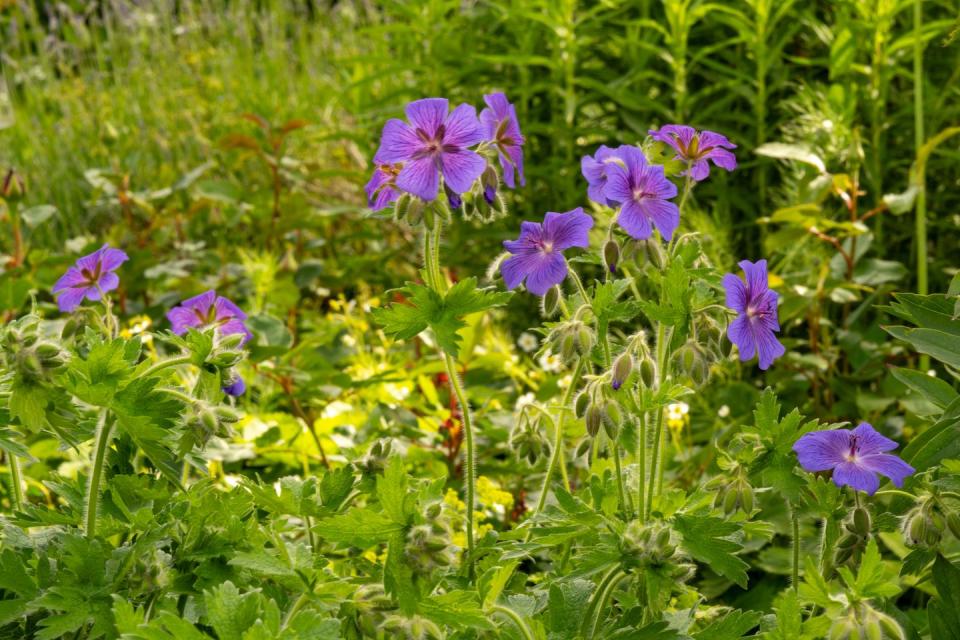
A silvery weeping pear tree makes a fine substitute fora sun-loving olive.
Geranium phaeum ‘Mourning Widow’ has small, dainty flowers of deepest claret or white and thrives in shade.
Borage is a Mediterranean stalwart and its relative, Pulmonaria saccharata, has pretty blue and pink flowers from late winter to late spring.
Viburnum tinus, a workhorse evergreen that is rarely out of flower, grows wild in Med scrubland and does well in shade.
The architectural foliage of acanthus – aka bear’s breeches– inspired the scroll-like leaves on the columns of ancient Greece.
For ground cover, Vinca minor’s useful cascade of trailing stems are full of violet-blue flowers from spring till autumn.
Adapt these Mediterranean garden ideas to suit your outdoor space this summer.
You Might Also Like


